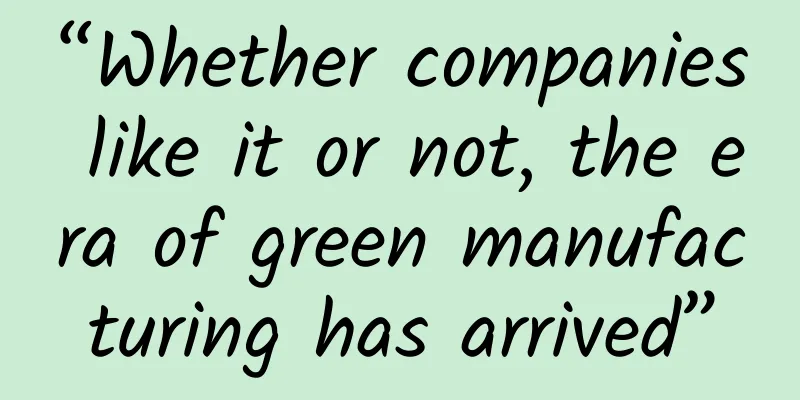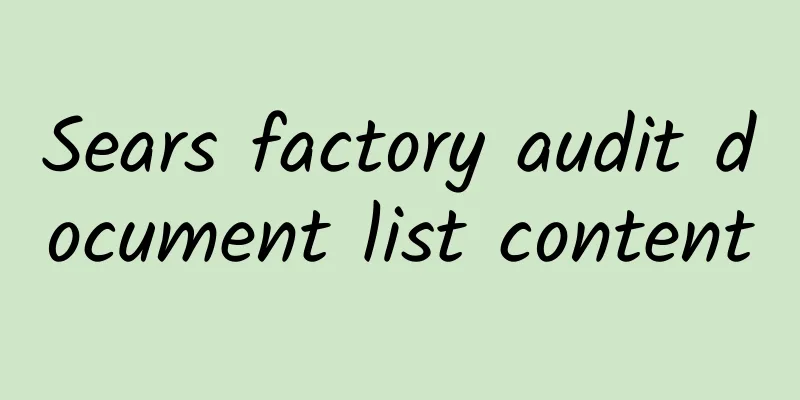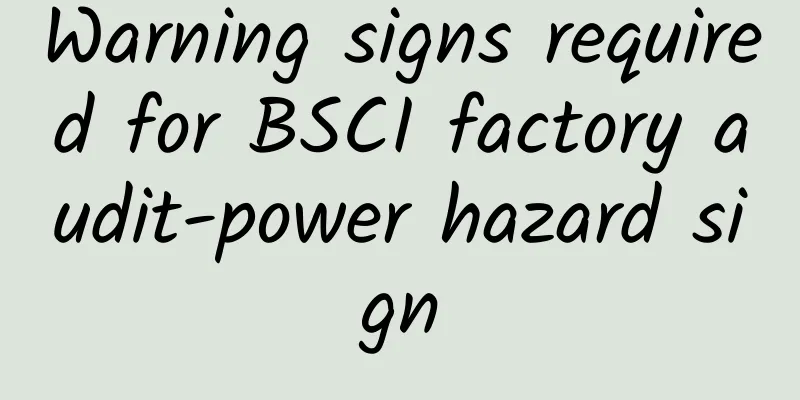“Whether companies like it or not, the era of green manufacturing has arrived”

|
"During the 14th Five-Year Plan period, green manufacturing has become a normalized and sustainable work task. It is also the main battlefield for achieving dual carbon goals in the manufacturing field. Whether companies are willing or not, the pressure and era of green manufacturing have come." Recently, at the live broadcast forum on green manufacturing to promote high-quality development of the green economy (hereinafter referred to as the "Forum") jointly organized by SMQ Shenzhen Testing Institute (hereinafter referred to as "Shenzhen Testing Institute"), the Federation of Industry and Commerce, and others, an expert said. Recently, the "14th Five-Year Plan for Industrial Green Development" pointed out that by 2025, the green and low-carbon transformation of industrial industrial structure and production methods will achieve remarkable results, and the level of green manufacturing will be comprehensively improved, laying a solid foundation for the carbon peak in the industrial field in 2030. The Ministry of Industry and Information Technology also issued the "Notice on the Construction of a Green Manufacturing System". Recently, Nandu interviewed Shenzhen Testing Institute and Industrial Innovation Alliance, focusing on the latest trends and solutions of green manufacturing. backgroundThe Ministry of Industry and Information Technology has already issued relevant notices to create a green manufacturing system "Green includes the concepts of environmental friendliness, resource conservation, and consumer friendliness. It is an important manifestation of practicing my country's ecological civilization construction and promoting sustainable development and high-quality development." Shenzhen Testing Institute told Nandu reporters that during the "13th Five-Year Plan" period, in order to implement "Made in China 2025", the Ministry of Industry and Information Technology issued the "Notice on the Construction of a Green Manufacturing System" in September 2016. With the purpose of promoting green development of the entire industrial chain and the entire life cycle of products, the main contents of the green manufacturing system are green factories, green design products, green parks, and green supply chains. At the same time, the "14th Five-Year Plan for Industrial Green Development" also pointed out that by 2025, the green and low-carbon transformation of industrial industrial structure and production methods will achieve remarkable results, green and low-carbon technologies and equipment will be widely used, the efficiency of energy and resource utilization will be greatly improved, and the level of green manufacturing will be comprehensively improved, laying a solid foundation for reaching carbon peak in the industrial field in 2030. In terms of green products, Shenzhen Testing Institute said that the 2016 State Council General Office's "Opinions on Establishing a Unified Green Product Standard, Certification and Labeling System" integrated existing environmental protection, energy saving, water saving, recycling, low carbon, recycling, organic and other products into green products. Currently, 19 categories of products have been included in the national green product certification catalog, including building materials, furniture, textile products, paper products and other products. The implementation of green manufacturing also needs to be evaluated in accordance with relevant green manufacturing standards, such as GB/T 36132-2018 "General Principles for Green Factory Evaluation", GB/T 32161-2015 "General Principles for Eco-design Product Evaluation", GB/T 39257-2020 "Green Manufacturing Enterprise Green Supply Chain Management Evaluation Specification" and other national standards. Opportunities and ChallengesIndustrial transformation and upgrading provides development opportunities for green manufacturing Shenzhen Testing Institute said that my country faces great opportunities in promoting green manufacturing. First, the global consumer market has a growing awareness of green environmental protection, and green consumption has been recognized by more and more consumers. Second, the international ecological environment has put forward higher requirements for the manufacturing industry, and major exporting countries have formulated green development plans and emission reduction targets. In addition, industrial transformation and upgrading has provided development opportunities for green manufacturing, especially the implementation of the development strategy of strategic emerging industries, which has put forward new requirements for my country's manufacturing industry. Fourth, a large number of policy measures have provided guidance and basis for the development of green manufacturing. "Made in China 2025" and "The 14th Five-Year Plan for Industrial Green Development" have clearly proposed the active development of green manufacturing. Finally, large enterprises are competing to improve their international competitiveness by developing green manufacturing, which has greatly promoted the development of my country's green manufacturing industry. The Regional Comprehensive Economic Partnership Agreement and the Belt and Road Initiative will have a profound impact on future industrial development. "At the same time, my country also faces many challenges in promoting green manufacturing." Shenzhen Testing Institute said that first, technical trade barriers have extended from early safety and performance aspects to green development areas such as resource and energy conservation, recycling, and environmental protection. In addition, the evaluation tools and standard systems for green manufacturing levels are imperfect, which objectively restricts the research and development and promotion of green manufacturing technology. The social support system for green manufacturing needs to be improved. Finally, the concept of green development is weak, and the atmosphere of promoting green manufacturing from top to bottom has not yet been formed. Mu Lingling, Secretary-General of the APEC Green Supply Chain Cooperation Network Tianjin Demonstration Center, said at the forum that green manufacturing has become a normalized and sustainable work task during the 14th Five-Year Plan period. It is also the main battlefield for achieving dual carbon goals in the manufacturing field. Whether companies are willing or not, the pressure and era of green manufacturing have come. Mu Lingling agreed that "technological innovation is the root of all solutions to all these problems." She also said that in addition to technology, the realization of ecological goals actually involves differentiated competition. Enterprises should also seize opportunities, control risks, and turn disadvantages into advantages according to their own industries. Only in this way can they be invincible when the challenges of dual carbon and green manufacturing come. "Now is the Spring and Autumn and Warring States era of dual carbon. Don't always see the pessimistic or challenging side, open your mind." Mu Lingling believes that in fact, the needs of enterprises may be investment opportunities for many financial institutions and investment institutions. Therefore, in the new era, we can adjust our thinking and find professional institutions to help enterprises accomplish what they need to do and achieve a win-win situation. measureProviding "one-stop" solutions for green finance, trade, etc. At present, what effective solutions are there in terms of green manufacturing? Shenzhen Testing Institute introduced a "one-stop" solution from data survey, goal setting to certification evaluation. First, data survey, first of all, quality control problems in design, production, manufacturing, etc. Combined with technical capability analysis, which ones can be solved, you can start from the design end of the dimensional engineering project. Secondly, from the organizational level, we can understand the data on carbon emissions. Enterprises in Shenzhen are mainly involved in two areas of activities, direct emissions and indirect emissions. Direct emissions generally refer to emissions generated by the direct combustion of fossil fuels such as gasoline, diesel and coal. Indirect emissions mainly refer to emissions generated indirectly by the use of energy such as electricity and cold. Most of the indirect emissions of industrial enterprises are indirect emissions generated by electricity use, accounting for more than 90%. As one of the first low-carbon pilot cities, Shenzhen was the first in the country to issue two local standards, "Guidelines for Verification of Greenhouse Gas Emissions of Organizations" and "Guidelines for Quantification and Reporting of Greenhouse Gas Emissions of Organizations", to carry out carbon verification work and promote low-carbon development of industrial enterprises. Shenzhen Testing Institute is also the lead drafting unit of these two standards and has started carbon verification work since 2012. After collecting data, green and sustainable concepts must be integrated into the entire industry chain. Emission reduction is not only about meeting current environmental protection requirements, but also about meeting the emission reduction of product production, such as reducing losses and improving yield. This link can introduce green product certification, carbon footprint certification, including the establishment and improvement of energy systems, energy-saving/clean energy transformation, and the introduction of green electricity. Subsequently, its green manufacturing level and results were certified by a third-party certification agency and were accepted by buyers, the government and the market. Combined with relevant green finance policies, such as the "Green Finance Guidelines for the Banking and Insurance Industries" recently issued by the China Banking and Insurance Regulatory Commission, the most important role of green finance is to change the future allocation of resources, especially the allocation of financial resources, so that investment and credit will further tilt towards low-carbon development, and continuously promote enterprises to improve their green and low-carbon manufacturing level. The improvement of the brand image and industrial competitiveness of Shenzhen's green quality development in the manufacturing industry requires technical support from inspection, testing and certification. In 2019, Shenzhen Testing Institute was approved as the Shenzhen Green Manufacturing Quality Certification Public Technology Service Platform, which provides testing and certification technical services to accelerate the transformation and upgrading of Shenzhen's manufacturing industry. Solving technical problems and proof of conformity in the process of industrial transformation and upgrading can assist government departments in quality work such as supervision and inspection, quality and safety risk monitoring, and supervision and spot checks, and provide quality supervision services covering the entire life cycle of industrial development. At the same time, through the analysis of testing, inspection and certification data, it provides a scientific decision-making basis for the government to promote industrial structure optimization and efficiency development. suggestionGreen consumption requires a large supply of green products and the expansion of green product certification catalog categories. He Yuxia, director of the Certification and Review Center of Shenzhen Testing Institute, said at the Green Manufacturing Forum that there are 2,788 green factories in the whole country, but only 62 in Shenzhen. So in the field of green development and green manufacturing, "I think there is still a lot of room for enterprises in Shenzhen and other regions to do." Shenzhen Testing Institute said in an interview with Nandu reporter that green products are closely related to green consumption. Green consumption requires a large supply of green products/services. Green product certification provides proof of green products, so that the market can follow and regulate green consumption behavior. At present, only 19 categories of products can provide green product certification, which is far from covering the consumer product category. In the future, it is necessary to continuously and accelerate the expansion of the green product certification catalog category. Shenzhen has also taken the lead in establishing its green and low-carbon evaluation index system for traditional advantageous industries, such as jewelry, to increase the supply of green products. Currently, under the guidance of the government department in charge, the Shenzhen Testing Institute is also studying the establishment of green and low-carbon evaluation indicators for new materials and new energy products to fill the gap in the green product certification catalog. Through the green product index requirements, they are transmitted to the supply chain, guiding enterprises to adopt green and low-carbon production processes, environmentally friendly designs, economical and environmentally friendly materials, etc., to promote green manufacturing from the demand side. Are you still worried about not passing the factory inspection? Don’t worry! Chaowang Consulting has been engaged in factory inspection and certification consulting for many years. We have rich experience and connections, and are familiar with the process and steps of factory inspection and certification. We can help companies solve certification problems at any time, easily deal with them, and pass them smoothly! Consultation phone: 021-51029391! |
<<: Which textile certifications are suitable for the European market?
>>: What is SCS Kingfisher Certification?
Recommend
What is VOVA? What information do companies need to submit to join the VOVA platform?
VOVA is a brand new one-stop cross-border e-comme...
WRAP certification official website system upgrade
According to the official notice issued by WRAP, f...
Common fire safety issues and solutions during BSCI factory audits (XI) Building fire protection two-in-one issues
Problem phenomenon: The problem of combining fact...
How is Shenzhen Yameng Intellectual Property? What is the business scope of Shenzhen Yameng Intellectual Property?
Shenzhen Yameng Intellectual Property Co., Ltd. i...
Three reasons for the emergence of social responsibility standards
There are three main reasons for the emergence of ...
What is LinkJoint? What brand services does LinkJoint provide?
LinkJoint is a technology-driven global digital m...
Where should I start planning my eBay store operations? (Part 2)
eBay store operation is the key to whether eBay s...
Warning signs required for BSCI factory inspection - containers for storing chemical substances
Warning signs required for BSCI factory audit: ch...
Coca-Cola factory audit content - environmental protection
Coca-Cola factory audit content - environmental p...
What does e-commerce factoring mean? What is the process of e-commerce factoring?
What does e-commerce factoring mean? Factoring bu...
Tchibo Company Profile-Tchibo Factory Inspection Consulting
Tchibo factory inspection official website: http:...
Common fire safety issues and solutions during BSCI factory audits (IV) Fire safety inspection failure
Problem phenomenon: Fire inspection failed. Solut...
How is Kahan International Logistics? What are the advantages of Kahan International Logistics?
How about Kahan International Logistics? Guangzho...
Power Of Attorney--Power of Attorney
What is Power Of Attorney? Power Of Attorney (POA...









